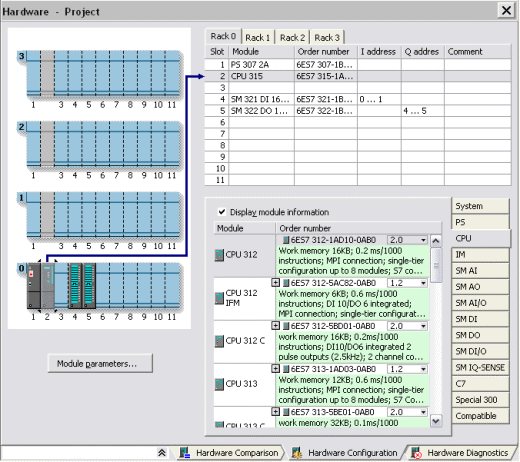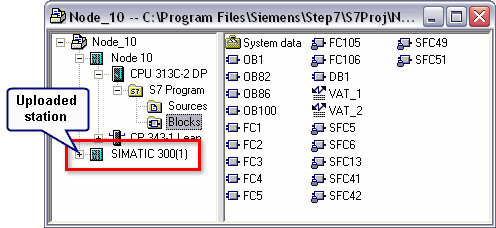
PT100 temperature is read from PIW276 and stored at DB1.DBD10.Īfter downloading hardware config and program to CPU314C-2DP, we can monitor lights status and PT100 value.
DB1.DBX0.3 control Light 3 at Output Q124.3. DB1.DBX0.2 control Light 2 at Output Q124.2. DB1.DBX0.1 control Light 1 at Output Q124.1. DB1.DBX0.0 control Light 0 at Output Q124.0. Main program is written in OB1 (Organization Block 1), lights control logic and temperature data are stored in DB1 (Data Block 1), as follows: PLC Ethernet communication is configured in NetPro with IP address: 192.168.1.71. The PT100 temperature is read from this remote I/O station. One remote I/O station ET200S communicate with CPU314C-2DP via Profibus cable. CPU314C-2DP digital outpouts control four lights via 4 relays 24VDC. Power supply module PS 307, CPU314C-2DP and Ethernet module CP343-1 are mounted on the same rack. My PLC connection is shown on below picture: ESPHome-flasher: It is designed to make flashing ESPs devices with ESPHome. Tasmotizer: The full-featured flashing tool for Tasmota. HomePoint: It can control your MQTT Home Devices from an ESP32-powered screen. Home Assistant Community Store HACS: HACS gives us a powerful UI to handle downloads of all our custom needs. ESPHome: is a system to control your ESP8266/ESP32 by simple yet powerful configuration files and control them remotely through Home Automation systems. #Siemens step 7 flash tutorials install
Extension node-red-contrib-s7 need to be install to interact with Siemens S7 PLCs. It provides a browser-based editor that makes it easy to wire together flows using the wide range of nodes in the palette that can be deployed to its runtime in a single click. Node-RED: is a programming tool for wiring together hardware devices, APIs and online services in new and interesting ways.
 SIMATIC Step 7 V5.6: is a Siemens PLC S7-300/ S7-400 programming software. The softwares required for this project include: 1pcs x Siemens S7-200-300 / 400 PLC programming adapter cable.
SIMATIC Step 7 V5.6: is a Siemens PLC S7-300/ S7-400 programming software. The softwares required for this project include: 1pcs x Siemens S7-200-300 / 400 PLC programming adapter cable. 
1pcs x FT232RL FTDI USB To TTL: for flashing Tasmota firmware.1 meters Profibus cables and 2pcs x Profibus connectors.And some more ET200S input modules/ ouput modules: 2AI, 2AO. 1pcs x Module 2AI RTD for 2-/3-/4-wire sensors: I used this module to read temperature from PT100. Profibus remote I/O station ET200S, including:.1pcs x Siemens CP 343-1 Lean: Communications processor CP 343-1 Lean for connection of SIMATIC S7-300 to Industrial Ethernet.1pcs x Siemens PS307 – 5A: SIMATIC S7-300 Regulated power supply input: 120/230 V AC, output: 24 V/5 ADC.1pcs x 4 Channels Relay Module or 8 Channels Relay Module.I think it should work better when there are more devices connected to the network.

I used a common switch/ router TP-LINK but I found that XIAOMI has a router that supports IOT.








 0 kommentar(er)
0 kommentar(er)
